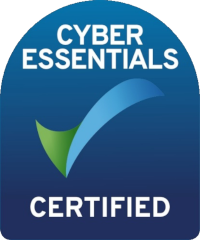BLOG
Charities: Risk Management Checklist for 2022
- Blog Tags
- Leadership
- Service Delivery
- Trustee
- Digital Support
- 11-01-2020
For charities and non-profits, a risk management plan is essential. Life can throw many unforeseen events and there is no way of predicting the future - as this last year has shown us! In short, every business puts itself at some risk merely existing. Charities and non-profits may suffer from financial unpredictability, legal liabilities, natural disasters or world crises, security breaches or management errors. While every organisation may aim to be careful and prepared for these risks, the action plan AFTER the risk occurs is the most critical component of the whole situation! We've pulled together your very own risk management checklist, so that if you haven't already, you can start implementing right now, ready to end this year on high and be prepped for 2022.
Identify potential risks
How can you plan and prepare for risk situations if you have no idea what they are? The first step in creating a risk management plan is by performing a risk assessment. The risk management plan will guide your business and services. An important area for a charity or non-profit organisation to investigate would be data. The data collected by the organisations are sensitive and confidential and would be detrimental to the business if leaked, misused or stolen. Identify where and how data is stored and whether there should be more organisation, protocols or protection.
Risk management strategies will look different within each organisation, but ALL of them will ensure they are approaching risk in a proactive manner and to identify issues before they happen and to hopefully avoid them ever happening again.
The management team, staff, trustees and board are all collectively responsible for risk management within a charity or non-profit. On a daily basis, risk management will be overseen by leadership within the organisation but the trustee board will also be involved in this. When the board or committee is involved, they can assist with identifying and assessing risks, implementing plans and preventative measures, and overseeing and evaluating risk mitigation.
After identifying potential risks through a risk assessment, charities and non-profits can move into managing them in the following steps:
Define risk boundary
No matter how prepared you are as an organisation, some risks really are inevitable. It is vital to determine which risks are worth taking and which aren't. This should be a collective understanding across all internal stakeholders so that everyone involved has the same understanding.
Prioritising risk and severity
It's vital to identify the risks that your organisation is most susceptible to. Then, it is a good idea to rank risks from most difficult to avoid, most detrimental and most important to the organisation etc. to become very clear on the importance of each risk.
Assign a leader
It is a fantastic idea to have an appointed person in charge of 1-5 risks if they occur. This does not mean that this person will be mitigating them on their own, but more of a point of contact and individual lead. This is helpful when managing risk as the individual is likely to take ownership and everybody else understands their role.
Consider tools
Today, there are many different risk management tools on the market with new ones emerging all of the time. It's necessary to research tools and software to see whether they are worth investing in and implementing within the organisation, especially for automation of processes etc, to reduce as much risk as possible.
Have up-to-date documents and training
A quick for levelling up your risk management game is to have a complete and up-to-date handbook for employees, old and new. The handbook will outline all policies and regulations, as well as behaviours, discrimination, harassment in the workplace etc. Having this handbook is a refined and transparent way to protect employees and the organisation.
Risk management in any business is an ongoing process that doesn't happen overnight. It is important to be aware of the current landscape of the industry to ensure all individuals involved are up-to-date with the latest trends, news and regulations.
By following the necessary steps above, charities and non-profits can prevent potential risks of every size and maximise efforts in creating safe, solid and unshakeable organisations in 2022!

Lucy Greenwell
Marketing Manager at Energise TechnologyContact us
If you'd like to know more about how we can help your organisation, please get in touch.
Subscribe to our newsletter
About Us
Providing technology solutions for charities, not-for-profits and education providers - helping them to deliver exceptional service to their users

Useful Links
Contact Us
Coates J & K
Priory Industrial Estate
Tetbury, Gloucestershire.
GL8 8HZ
01666 505718